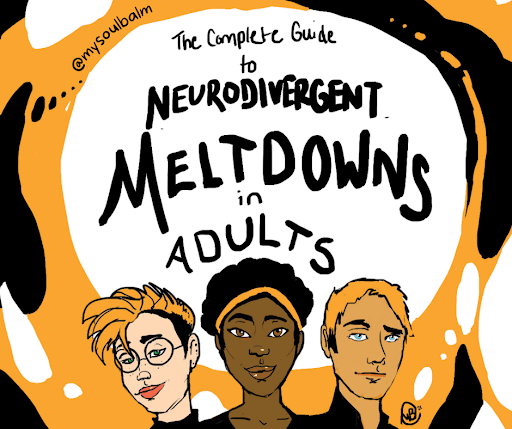
As we all know, meltdowns in autistic adults are always misunderstood. In fact, they are not just bad behaviour, but a response to sensory overload and emotional stress.
For adults with autism, everyday sensory input is like loud noises or bright lights because their brain works differently, that leads to emotional overload – triggering meltdown.
In the condition of meltdowns, the brain’s emotional center takes over, making it complex for the individual to avoid their reactions.
Through this blog, we will get to know about meltdowns, how to identify the signs, and how to support a person during meltdowns. So let’s start reading and understand meltdowns better!
Why Meltdowns are not just Behavioral?
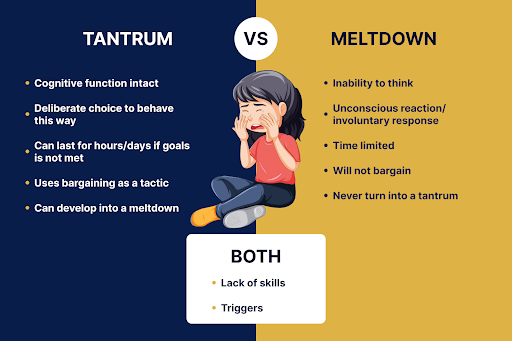
This is not just about misbehaving or attention seeking, but actually it is a response to overwhelming sensory and emotional stimuli that cannot be easily regulated.
So, it is important to understand the biology of sensory overloading, and the principle of emotional dysregulation in autistic individual’s brains to clarify these meltdowns.
Biology behind sensory overloading
- The human brain processes sensory information like sounds, smells, sights and textures.
- But if we talk about individuals with autism, this system doesn’t work in the same way.
For example – a marketplace may feel unbearable to someone with autism because the bright lights, sounds, and crowd can trigger an overload. In this case the brain struggles to process sensory information which causes emotional overwhelm. Here meltdown occurs as a coping mechanism for this sensory and emotional overloading.
Emotional dysregulation
- The autistic brain has differences in processing emotions, like how to react to stress and how to regulate emotions.
- The neurotypical brain has a prefrontal cortex which helps in managing emotions, but in the case of the autistic brain, the process is less efficient, leading to emotional dysregulation.
Taking an example – Autistic adults attending a family function, while socially interacting, they feel less overwhelming that sensory overload but still they can be affected by the feeling of anxiety or stress. The constant need to process non-verbal indications may cause frustrations, leading to meltdowns, even if the condition seems minor to other people.
Early Signs of Meltdowns
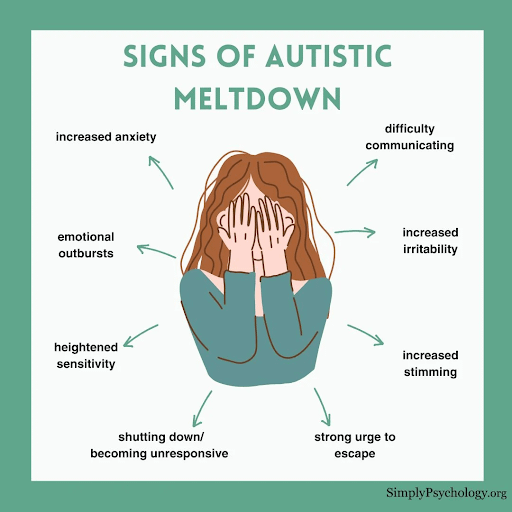
Identifying the early signs of a meltdown in adults with autism is important to prevent and minimize its intensity.
Here are some subtle signs to watch for:-
- Increased restlessness
Moving hands, or tapping feets which shows a response of growing anxiety.
- Ignorance or avoidance
A person who is social, may start to avoid himself/herself from the conversations or activities, resulting in isolating in a corner.
- Sensitivity to sensory stimuli
It could be a sign of sensory overload when they suddenly experience discomfort to noises, or lights.
- Changes in body language
Clenching, or crossing their arms can reflect that they are suffering from tension and anxiety.
Taking an example here, A boy in a family function, where noises and lightning are there which makes him overwhelmed, which leads to tapping of finger, avoiding eye contact, and sign of restlessness.
These are the early signs which indicate struggle to manage the incoming sensory and emotional loading.
Here are points for emotional overloading:-
Emotions are a strong operator of meltdowns, and one of the important indicators to watch for.
- Irritation
- Panic or anxiety
- Feeling difficulty in expressing emotions
As an example, A man in a meeting suddenly experiences frustration, raising his voice slightly when asking a simple question. This small difference in pitch indicates frustration, combined with tensing up or foot tapping, indicates emotional loading. In case it is not recognized then this can be converted into meltdowns.
Practical Approaches to Support during a Meltdown
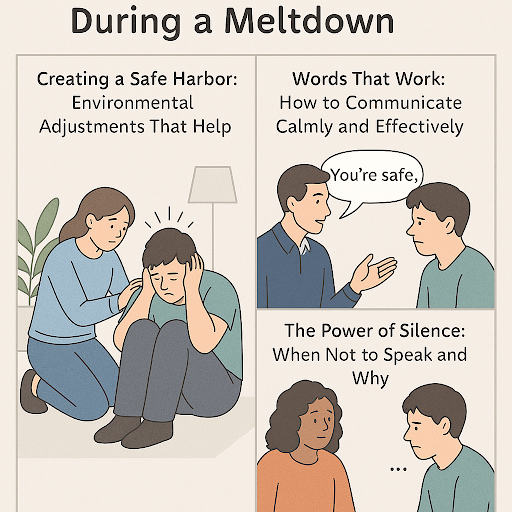
Supporting someone with autism during meltdowns needs patience, calmness, and a thoughtful approach by adjusting the environment, communication, and understanding when to be silent to help them.
- Maintaining an environment – Offer a quiet, and low stimulation place to ease meltdowns as dim lights, and low noise.
For example – Shifting an individual from an overcrowded place to a quiet place to prevent sensory overload and make them feel safer.
- Communication – Try to keep your language and communication simple and soothing like – Yes “you are safe” to provide comfort.
For example – “Let’s take a break and relax” telling this can help to feel supported and understood.
- Understanding when to be silent – In some conditions, being silent is the powerful key because speaking too much can overwhelm the person. In this case we need to give them time to process their emotions to calm down at their own pace.
For example – Sitting quietly with the person with autism who is upset can be more impactful than trying to talk to them about it.
Importance of Meltdowns Awareness
Awareness about autism meltdowns in autistic individuals is important for providing a supportive and understanding environment. Because it’s not just about identifying but it is about understanding their root cause and how to respond to it.
Lets understand this with examples:-
Example 1 – A teacher who understands his autistic student behaviour then he will teach calmly and patiently rather than overreacting because of frustration.
Example 2 – In school or workplace sensory rooms play an important role to provide a space to calm down for autistic individuals to reduce the chances of meltdowns.
So, when we educate people about the neurological reasons behind meltdowns, we can encourage patience, and offer better support in school, offices, or public areas.
Summing Up..
- While concluding this blog, we have understood that meltdowns are not just a bad behaviour, but actually it’s a way to respond to sensory overloading.
- Identifying the early signs such as restlessness, or ignorance can prevent occurrence of a meltdown.
- We can offer a supportive environment through adjustment in surroundings, calm language, and to be silent in some conditions to help the person to feel safe and understood.
Curious about understanding more about social skills for your child? Follow Rachna Sawhney Pargi Journey for Autistic Child Support
“Every thoughts is an experiment” This was mine —
Written by Prachi – July,2025
Reference
- Phung, Jasmine, Melanie Penner, Clémentine Pirlot, and Christie Welch. 2021. “What I Wish You Knew: Insights on Burnout, Inertia, Meltdown, and Shutdown from Autistic Youth.” Frontiers in Psychology 12 (12). https://doi.org/10.3389/fpsyg.2021.741421.
- Soden, Paul A, Anjali Bhat, Adam K Anderson, and Karl Friston. 2025. “The Meltdown Pathway: A Multidisciplinary Account of Autistic Meltdowns.” Psychological Review, May. https://doi.org/10.1037/rev0000543.
- Lewis, Laura Foran, and Kailey Stevens. 2023. “The Lived Experience of Meltdowns for Autistic Adults.” Autism 27 (6): 136236132211457. https://doi.org/10.1177/13623613221145783.
- Schroeder, Jessica H., Mary Desrocher, James M. Bebko, and M. Catherine Cappadocia. 2010. “The Neurobiology of Autism: Theoretical Applications.” Research in Autism Spectrum Disorders 4 (4): 555–64. https://doi.org/10.1016/j.rasd.2010.01.004.
- Schroeder, Jessica H., Mary Desrocher, James M. Bebko, and M. Catherine Cappadocia. 2010. “The Neurobiology of Autism: Theoretical Applications.” Research in Autism Spectrum Disorders 4 (4): 555–64. https://doi.org/10.1016/j.rasd.2010.01.004.
- Pardo, Carlos A., and Charles G. Eberhart. 2007. “The Neurobiology of Autism.” Brain Pathology 17 (4): 434–47. https://doi.org/10.1111/j.1750-3639.2007.00102.x.

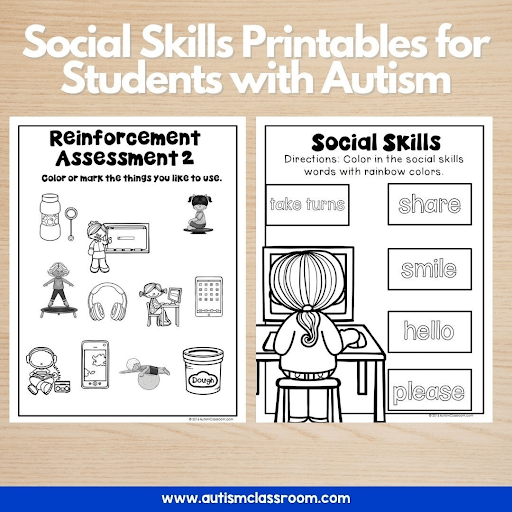

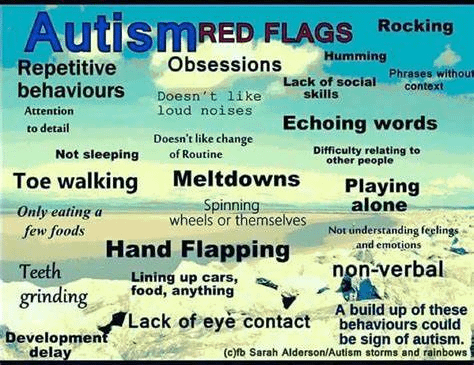



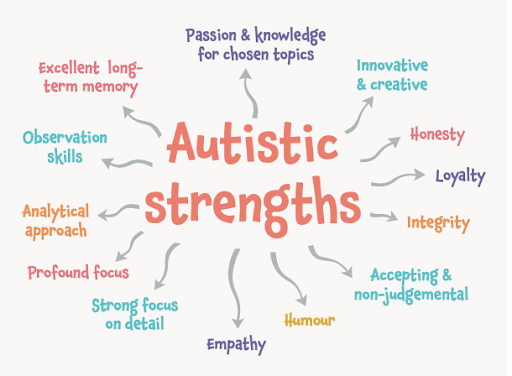
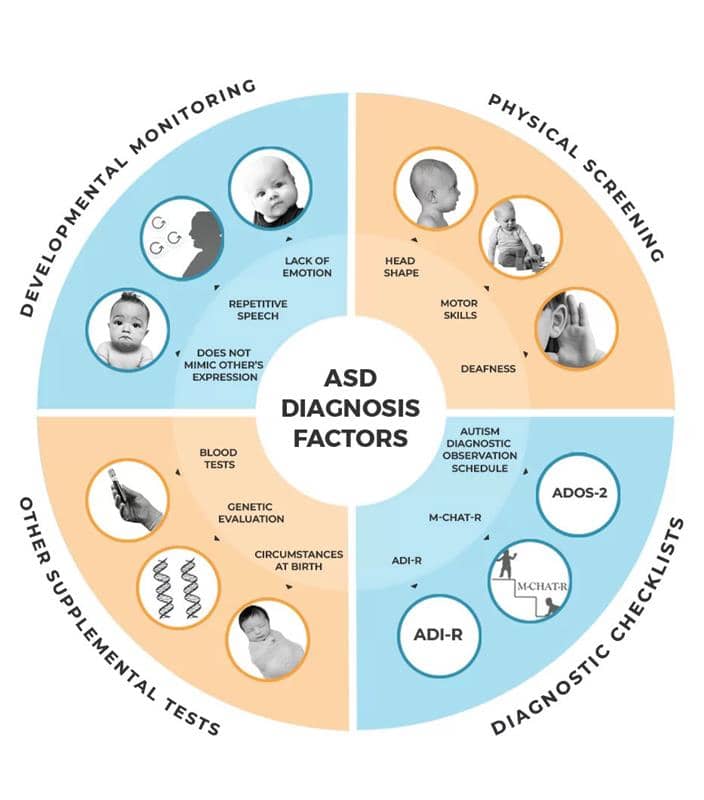
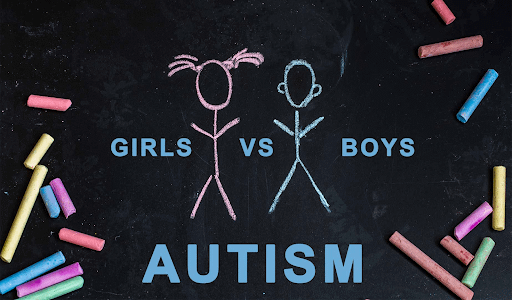


No comments yet. Be the first!